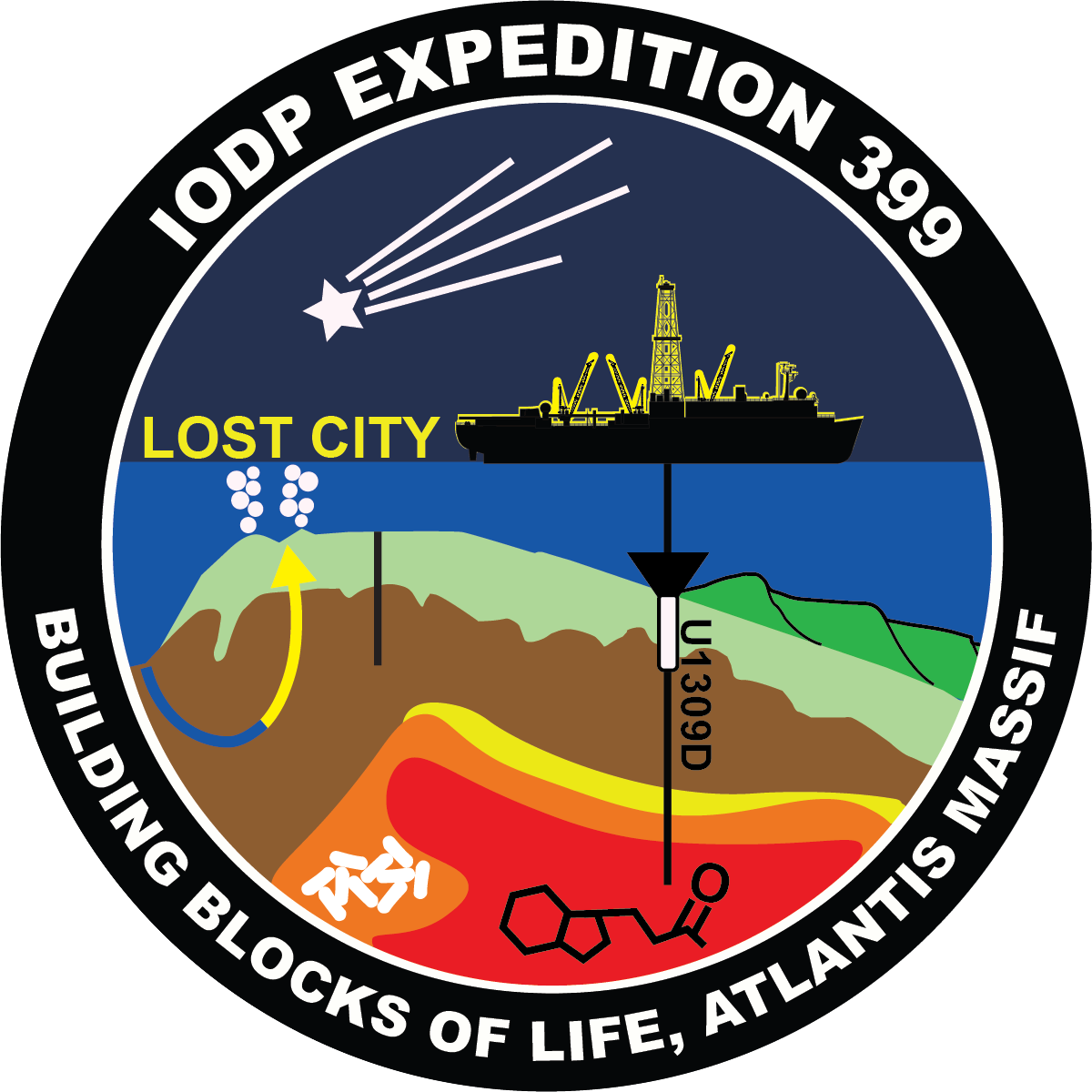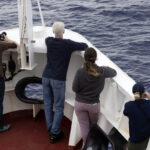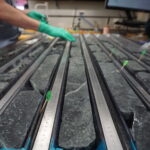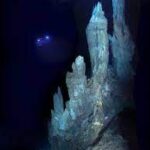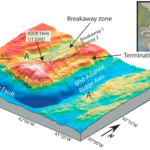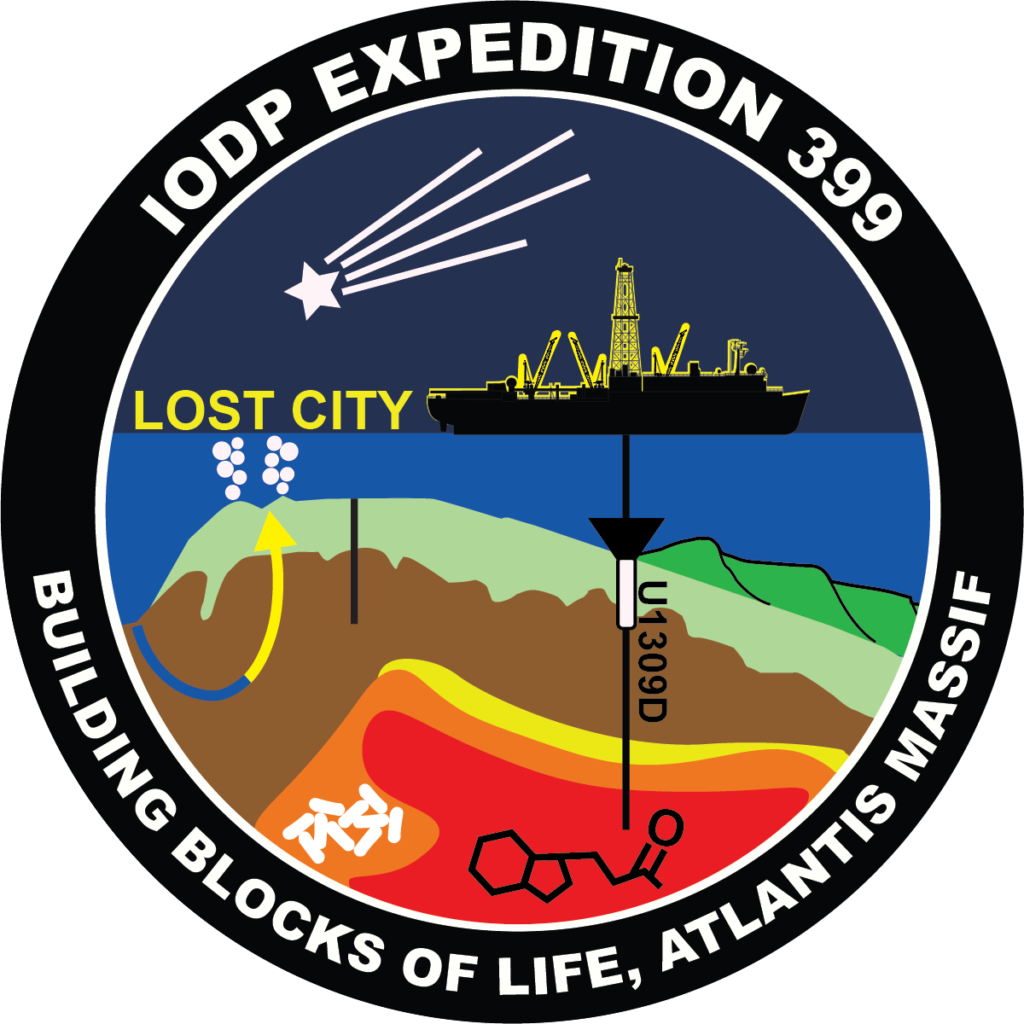
The Lost City Hydrothermal Field
The Atlantis Massif is an oceanic core complex at 30°N on the Mid-Atlantic Ridge on the north side of the Atlantis I transform fault, which offsets the ridge by ~60 kilometers. The massif is capped by a corrugated fault zone, and is composed of a large gabbro intrusion into serpentinized mantle rocks to the south. These altered mantle rocks host the Lost City hydrothermal field, which is famous for carbonate chimneys the height of a house, venting alkaline fluids rich in hydrogen and methane. The hydrogen is formed by the reaction between seawater and mantle mineral olivine, and is a
powerful source of energy that may have fueled the formation of the first building blocks of life on Earth. Before life could begin, small organic molecules must have formed abiotically. Scientists have suggested that vent fields such as Lost City may be an analog of systems where these prebiotic reactions occurred, leading to the early development of life. Similar systems may be present on “icy worlds” such as Enceladus, which is one of the moons of Saturn, and capable of supporting life.One of the main aims of International Ocean Discovery Program Expedition 399 is to study the reactions between olivine and seawater that are believed to be actively occurring at depth in the massif today. We will deepen an existing hole (U1309D) that reaches 1415 meters below the seafloor and has a bottom temperature of 140°C. This temperature is above the currently known limit for microbial life, so we can be sure that any hydrogen, methane, or organic molecules produced at greater depths are not due to microbial processes. We hope to reach 2060 meters below the seafloor, where temperatures of ~220°C are predicted. We will sample fluids in the borehole to look at active exchange of chemical components between fluid and rock and production of hydrogen and methane. We will also drill a shallow hole closer to the hydrothermal field that we predict will access the subseafloor environments that reflect the processes leading to this remarkable system.
Other aims of the expedition are to study the processes of formation of the Atlantis Massif, including magmatism, deformation, and high temperature seawater-rock interaction, as well as the microbes living within the rocks and in the borehole waters. These are “extremophile” microbes that can live in highly alkaline environments at temperatures up to 100°C and high pressures. If environments similar to Lost City were the cradle of life, this is the type of life that would have formed.
